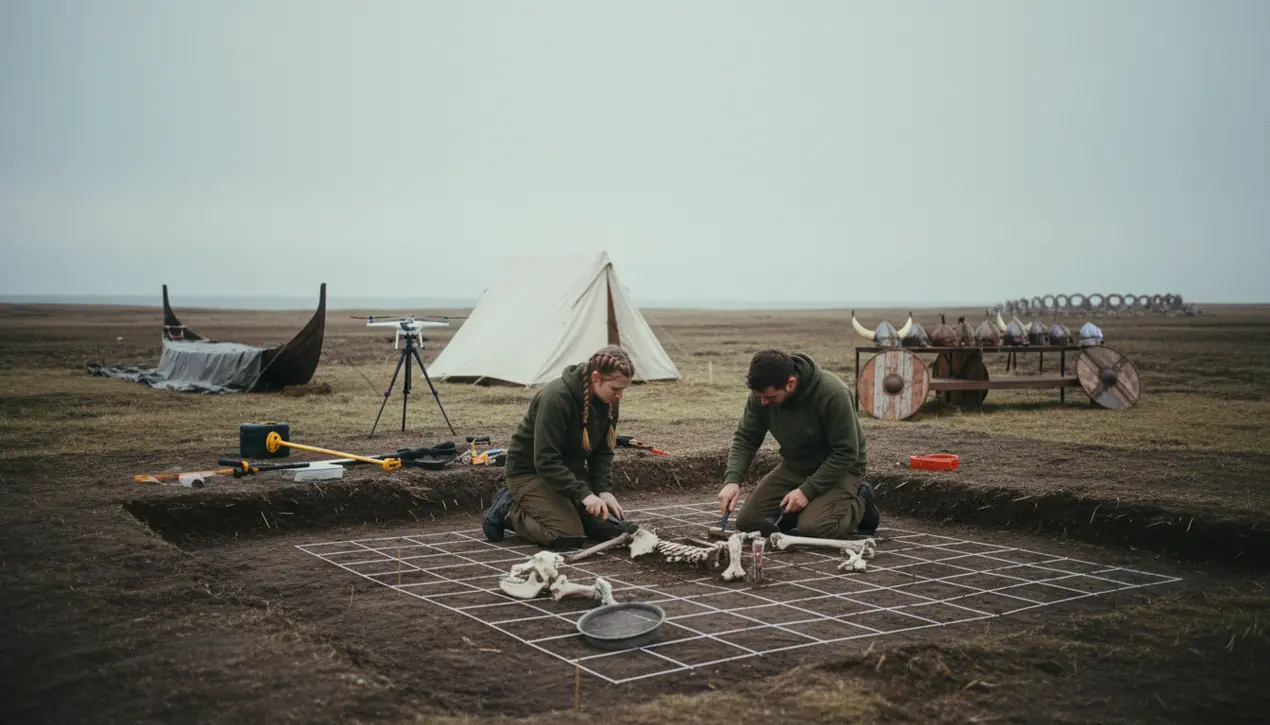
SciencearchaeologyAncient Civilizations
Scholars say most of what we believe about Vikings is wrong
AN
Andrew Blake
10 hours ago7 min read3 comments
The popular image of the horn-helmeted, mead-swilling Viking raider, so deeply embedded in our collective consciousness from blockbuster films to heavy metal album covers, is facing a scholarly reckoning that is as thorough as it is fascinating. It turns out that much of what we accept as historical fact about Norse culture is less a pristine artifact from the past and more a palimpsest, repeatedly written over by successive generations with their own agendas.The primary sources we rely on, like the Icelandic sagas and the Prose Edda, were penned by Christian scholars centuries after the Viking Age had concluded, meaning they are filtered through a post-conversion lens, often romanticizing or demonizing a pagan past they no longer fully understood. This initial distortion was just the beginning; the 19th century saw a powerful resurgence of interest in the Viking figure, but this was heavily driven by nationalist movements across Scandinavia and Germany, who meticulously crafted a narrative of pure, heroic ancestors to bolster modern political identities and territorial claims.This manufactured legacy was then eagerly consumed by popular culture, from Wagner's operas to later comic books, each iteration sanding down the complex, often mundane reality of Norse society—which was as much about farming, trading, and complex legal systems as it was about raiding—into a simpler, more marketable symbol of brute strength and untamed masculinity. Today, this process continues unabated within certain strands of neo-paganism and, more worryingly, by far-right groups who co-opt these symbols to propagate myths of racial purity, a concept entirely alien to the historically diverse and interconnected Viking world.Contemporary archaeologists and historians are now painstakingly deconstructing these layers of interpretation, using cutting-edge techniques like DNA analysis of burial sites and stable isotope analysis to trace individual life stories, revealing a picture far richer and more contradictory than the monolith we've been sold. They are finding evidence of extensive trade routes that stretched to Baghdad, of cultural assimilation in places like Ireland and Normandy, and of a societal structure where women could own property and initiate divorce. This scholarly work is not merely an academic exercise; it is a crucial intervention in how we understand the formation of cultural identity itself, demonstrating that history is never a fixed point but a constant dialogue between the past and the present, and that the stories we tell about our origins are often more revealing of our own anxieties and aspirations than they are of the people we claim to be remembering.
#featured
#Vikings
#Norse mythology
#historical reinterpretation
#medieval sources
#pop culture
#neo-paganism
#nationalism
Stay Informed. Act Smarter.
Get weekly highlights, major headlines, and expert insights — then put your knowledge to work in our live prediction markets.
Related News
Comments
Loading comments...
© 2025 Outpoll Service LTD. All rights reserved.